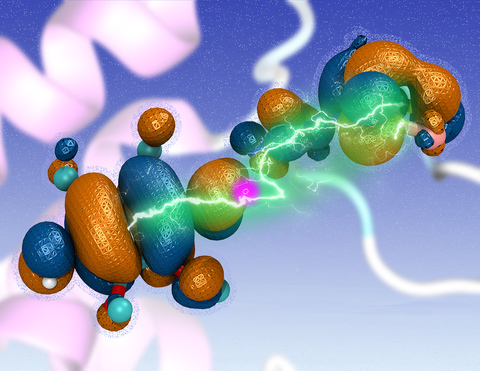Highlights of our Work
2024 | 2023 | 2022 | 2021 | 2020 | 2019 | 2018 | 2017 | 2016 | 2015 | 2014 | 2013 | 2012 | 2011 | 2010 | 2009 | 2008 | 2007 | 2006 | 2005 | 2004 | 2003 | 2002 | 2001

image size:
1.5MB
made with VMD
Cellular respiration and photosynthesis are the primary energy production mechanisms for sustaining life on earth.
Both processes use input energy (food or sunlight)
to drive coupled electron and proton transfer reactions,
thus replenishing the electrical charge of the cellular membrane,
which in turn is used to produce ATP - the universal fuel for all cellular activities.
A key step involved in both bacterial photosynthesis and mitochondrial respiration is
mediated by a specialized protein complex,
the bc1 complex,
which seizes the energy released from interconversion of quinol and quinone to pump protons across the bioenergetic membrane.
A recent study,
combining molecular simulations performed with NAMD and quantum chemical calculations,
unveiled the coupled nature of the proton and electron transfer reactions in the quinol binding site of the bc1 complex from a photosynthetic bacterium at an unprecedented level and described the role of key mechanistic elements.
More about the bc1 complex can be found here.



